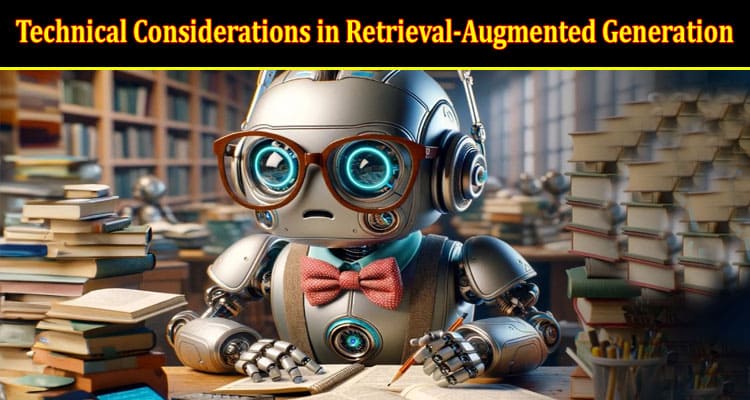In recent years, retrieval-augmented generation has emerged as a powerful paradigm in natural language processing, offering a novel approach to text generation tasks. This technique combines the strengths of retrieval-based methods, which leverage existing knowledge or data, with those of generative models, which can produce novel and coherent text. However, the successful implementation of retrieval-augmented generation requires careful consideration of various technical factors to ensure optimal performance. In this article, we delve into the key technical considerations involved in implementing retrieval-augmented generation, exploring both theoretical concepts and practical considerations.
Understanding Retrieval-Augmented Generation:
Retrieval-augmented generation is a paradigm in NLP where traditional generative models, such as language models (e.g., GPT), are augmented with a retrieval mechanism. This mechanism allows the model to retrieve relevant information from external knowledge sources or previously generated content before generating the next sequence of text. By incorporating external knowledge, the model can produce more informative, coherent, and contextually relevant outputs.
Technical Considerations:
- Retrieval Model Selection: One of the fundamental technical considerations in retrieval-augmented generation is the choice of retrieval model. This model determines how information is retrieved from the corpus or knowledge base. Common approaches include keyword matching, vector similarity, or more advanced techniques such as neural retrievers. The selection of an appropriate retrieval model depends on factors such as the size of the corpus, the nature of the data, and the specific task requirements.
- Data Preprocessing: Effective data preprocessing is crucial for improving the performance of retrieval-augmented generation systems. This includes tasks such as tokenization, stemming, and entity recognition, which help in extracting meaningful information from the corpus and reducing noise.
- Integration of Retrieval and Generation Models: Seamless integration between the retrieval and generation models is essential for the overall performance of the system. This involves designing efficient pipelines for passing retrieved information to the generative model while preserving contextual relevance. Techniques such as attention mechanisms and hierarchical modeling can facilitate effective integration between the two components.
- Scalability and Efficiency: Retrieval-augmented generation systems often operate on large-scale datasets or knowledge bases, requiring careful consideration of scalability and efficiency. Optimizing retrieval algorithms, parallelizing computations, and leveraging distributed computing frameworks are essential for handling large volumes of data efficiently.
- Fine-tuning and Model Adaptation: Fine-tuning both the retrieval and generation models on task-specific data can significantly improve the performance of retrieval-augmented generation systems. Additionally, techniques such as transfer learning and domain adaptation can be employed to adapt pre-trained models to specific domains or tasks, further enhancing their effectiveness.
- Evaluation Metrics: Developing appropriate evaluation metrics is critical for assessing the performance of retrieval-augmented generation systems. Traditional metrics such as BLEU (Bilingual Evaluation Understudy) and ROUGE (Recall-Oriented Understudy for Gisting Evaluation) may not fully capture the quality and relevance of generated text. Task-specific evaluation metrics that account for both the retrieved information and the generated output are necessary for meaningful performance evaluation.
Practical Applications:
The versatility of retrieval-augmented generation makes it applicable across various domains and use cases. From generating personalized responses in chatbots to assisting content creation in natural language generation platforms, retrieval-augmented generation offers a powerful tool for enhancing the quality and relevance of generated text. Additionally, in fields such as healthcare or legal documentation, where access to vast amounts of specialized knowledge is crucial, retrieval-augmented generation can aid in generating accurate and contextually relevant information.
Conclusion
Retrieval-augmented generation represents a promising approach to text generation tasks, combining the strengths of retrieval-based methods with generative models. However, successful implementation requires careful consideration of various technical factors, including model selection, data preprocessing, integration of retrieval and generation models, scalability, fine-tuning, and evaluation metrics. By addressing these considerations, researchers and practitioners can develop robust retrieval-augmented generation systems capable of generating high-quality text across a wide range of applications.

